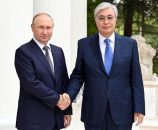Nazia Nazar
Indian leaders brag about shining India, democratic India and secular India every now and then to hide the dark face of its extremism. Jawahar Lal Nehru University incident is still haunting India and perception of its secular and democratic face is fast eroding. The latest wave emanating from Jawahar Lal Nehru University was in fact linked to the consciousness and self-actualization by few honorable people of India. The current controversy has its genesis in an event organised by students at JNU on the issue of Indian-administered Kashmir where India has let loose the reign of terror. Kanhaiya Kumar and his associates were arrested in February on the charges of sedition. While in custody and on their appearance before the court the educated youth was subjected to torture by Akhil Bhartiya Vidyarthi Parishad (ABVP) activists in the presence of police.
According to some reports of Indian Media, student leader Kanhaiya Kumar (after he was released on bail on 2 March) delivered a speech to a packed auditorium on the JNU campus, in which he said that he was seeking, not freedom from India but freedom within India. He appealed to his fellow students to free the nation from the clutches of the Rashtriya Swayamsevak Sangh, which he said was trying to divide the nation. Referring to the right wing student party ABVP, whose members were instrumental in bringing about his arrest, Kanhaiya Kumar called them his “opposition”, not his enemy. He urged his supporters to keep raising the slogans of azadi (freedom). In fact, Indian government is supporting extremism in all its forms and manifestation; cancellation of Pakistan-India cricket match from Dharam-shala, media publicity on Pathankot incident and denial in case of Kulbhushan Yadav reflected Indian leadership’s mindset.
The BJP-led government under Prime Minister Narendra Modi has exposed the true face of India; and there is a divide between enlightened and moderate Indian youth vis-a-vis extremist and radical Indian leadership. Whereas, a segment of youth stands for sanity and freedom of expression, the majority supports radical as well as extremist behaviors prevalent within their society. Denying basic right of expression to the well-educated university students and to its saner citizens and minorities has knocked the bottom out of the pretense establishing conclusively that India does not believe in the right of expression enshrined in its constitution. Intolerance is shaking the very foundations of so-called democratic India. It is not the question of Kashmir, Pakistan or Afzal Guru but it is the fear that India could implode from within. Reaction by Indian artists, intellectuals and the international community are indicative of the bad times India is likely to have.
The episode of Kulbashan Yadav has exposed the much touted Indian stance on terrorism. Now international community is well aware about the misdeeds of India, but due to commercial gains it tries to please the Indian leadership by closing their eyes. In many provinces, there is disaffection because of policies of the Indian government, and people resort to terror acts in retaliation. However, India has been blaming Pakistan for every act of terrorism, though in 2009, then prime minister Manmohan Singh had acknowledged that home grown groups were now carrying out bombing in India. Within Indian media, now, opinion makers are raising serious concerns about Indian intentions and state-sponsored and state executed terrorism. If India is to survive it has to de-radicalize their leadership, grant people freedom within India otherwise they will wage struggle to get freedom from India.
Human Watch reports often point out about the violence against 150 million former untouchables and millions belonging to other minorities. Human rights organizations regularly publish reports about atrocities committed on Christians, Muslims and Dalits. Kashmiris are, however, the worst sufferers on earth, perhaps only second to Palestinians. In June 1984, Indian army had attacked the Golden Temple with Tanks and armored cars killing more than 2000 Sikhs though government count was 492. In another episode, with more killings and subsequent flight of nearly 400 Christians who walked over 300 km through mountains and forests to reach the Young men’s Christian Association camp in Bhubaneswar to take refuge speaks volumes about the plight of Christians in Hindu-dominated India’s eastern state of Orissa. Despite condemnation of violence by Pope Benedict and Italian government’s reaction, Christians were being forced to change their religion in Orissa. Muslims are also being forced by Hindu extremists to convert to Hindu religion.
In March 2016, India had denied visas for a delegation from the US government agency, which is responsible for monitoring international religious freedom. The delegation from the US Commission on International Religious Freedom (USCIRF) was scheduled to leave for India from the US for a visit with the support of the US State Department and the US embassy in New Delhi. However, India failed to issue the necessary visas, the commission said. “We are deeply disappointed by the Indian government’s denial of these visas,” USCIRF chairman Robert George said in a statement. US President Barack Obama during his visit to India last year had nudged New Delhi to tackle issues that could divide the country and hinder its development. “India will succeed so long as it is not split along the lines of religious faith,” President Obama told an audience in India’s capital city.


